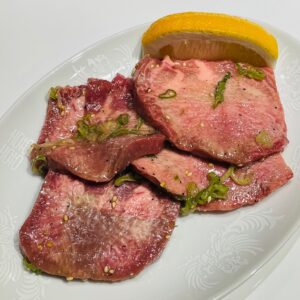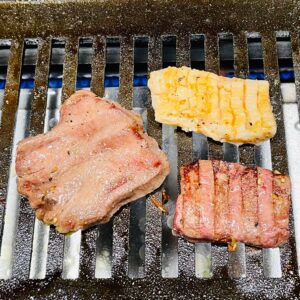September itinerary in Japan Day 4 (Iwate Day 2 Meal edition)
(Wednesday, September 29)
Table of contents
Breakfast
At “Michi-no-Eki Takatamatsubara” in the Takatamatsubara Memorial Park, there are two restaurants, “Matsubara Shokudo” and “Takata no Gohan”. “Takata no Gohan” was closed, so I had a late breakfast at “Matsubara Shokudo”. I ordered “Kaisendon set”. The “Kaisendon set” includes a seafood bowl made from fish and shellfish caught in the sea near Rikuzentakata, centered on Hirota Bay, and “stem wakame” pickled in wasabi and “mekabu soba” caught in Hirota Bay.
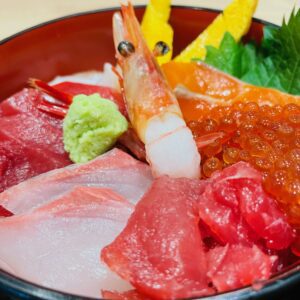

Even if it wasn’t delicious enough to impress, it was delicious enough for the “Kaisendon set” offered at the roadside station. This shop is recommended when you go to Takata Matsubara Memorial Park. However, if you have time, you should eat at restaurants around Rikuzentakata Station.
https://edokagura.com/en/local-cuisine/455/
Lunch
What I absolutely wanted to eat in Rikuzentakata was the “Rikuzentakata Ezoishikagekai (Clinocardium california)“, which is the summer “pride fish” of Iwate Prefecture selected by Japan Fisheries Cooperatives. When asked at the Rikuzentakata City Tourism and Products Association next to Rikuzentakata Station, it was said that “Sushi Matsuda” was serving “Ezoishikagekai”.
https://takanavi.org/gourmet/12168
“Sushi Matsuda” is a new sushi restaurant that has been open for about a year. The sushi restaurant owner who trained in Sendai opened in Rikuzentakata, his hometown. There was a “local fish bowl”, so I ordered it and ordered an additional “Ezoishikagekai” sushi. The “local fish bowl” contained local fish such as spanish mackerel, bonito, Japanese amberjack, salmon, and conger eel. Originally, spanish mackerel and Japanese amberjack caught in the southwestern region such as Hokuriku are said to be often caught in Rikuzentakata due to the effects of global warming in seawater. It was a very delicious local fish bowl.
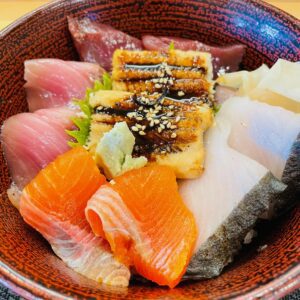
“Ezoishikagekai” was the best. The texture was plump, and the more you chewed it, the sweeter it became. Ezoishikagekai are caught in Rikuzentakata, but most of them are shipped to high-end restaurants and sushi restaurants in Tokyo, and locals rarely eat them. However, at the sushi restaurant in Rikuzentakata, other than “Sushi Matsuda” was served, so you will be able to eat Ezoishikagekai. It is good to eat Ezoishikagekai in Tokyo, but from the viewpoint of local production for local consumption, I think it is best to eat at Rikuzentakata.
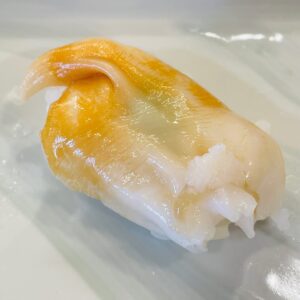
Craft beer
I drank craft beer at the small brewery “Rikuzentakata Micro Brewery” in “Rikuzentakata Fermentation Park CAMOCY”. It’s a very small brewery, but I was able to drink a very good beer. Please try it when you go to Rikuzentakata. CAMOCY is also a bright facility where the light shines in, and I really like it.

Dinner
I ate “Morioka Reimen” at a yakiniku restaurant in Morioka as planned for the itinerary I made. Morioka Reimen is a “Local dishes loved by the nation” selected by the Ministry of Agriculture, Forestry and Fisheries.
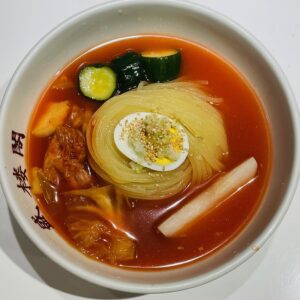
https://www.maff.go.jp/j/nousin/kouryu/kyodo_ryouri/attach/pdf/190131-6.pdf
The restaurant where I ate “Morioka Reimen” is “Seiroukaku” in front of Morioka Station. Seiroukaku has been selected as one of the 100 Tabelog restaurants. The day I went was also crowded with many customers. Both the grilled meat and the cold noodles were very delicious. Especially, the tongue salt was the best tongue that was thick and delicious. The cold noodles were thicker than the general cold noodles and were very satisfying to eat. The cold noodle soup was delicious enough to drink all up.
